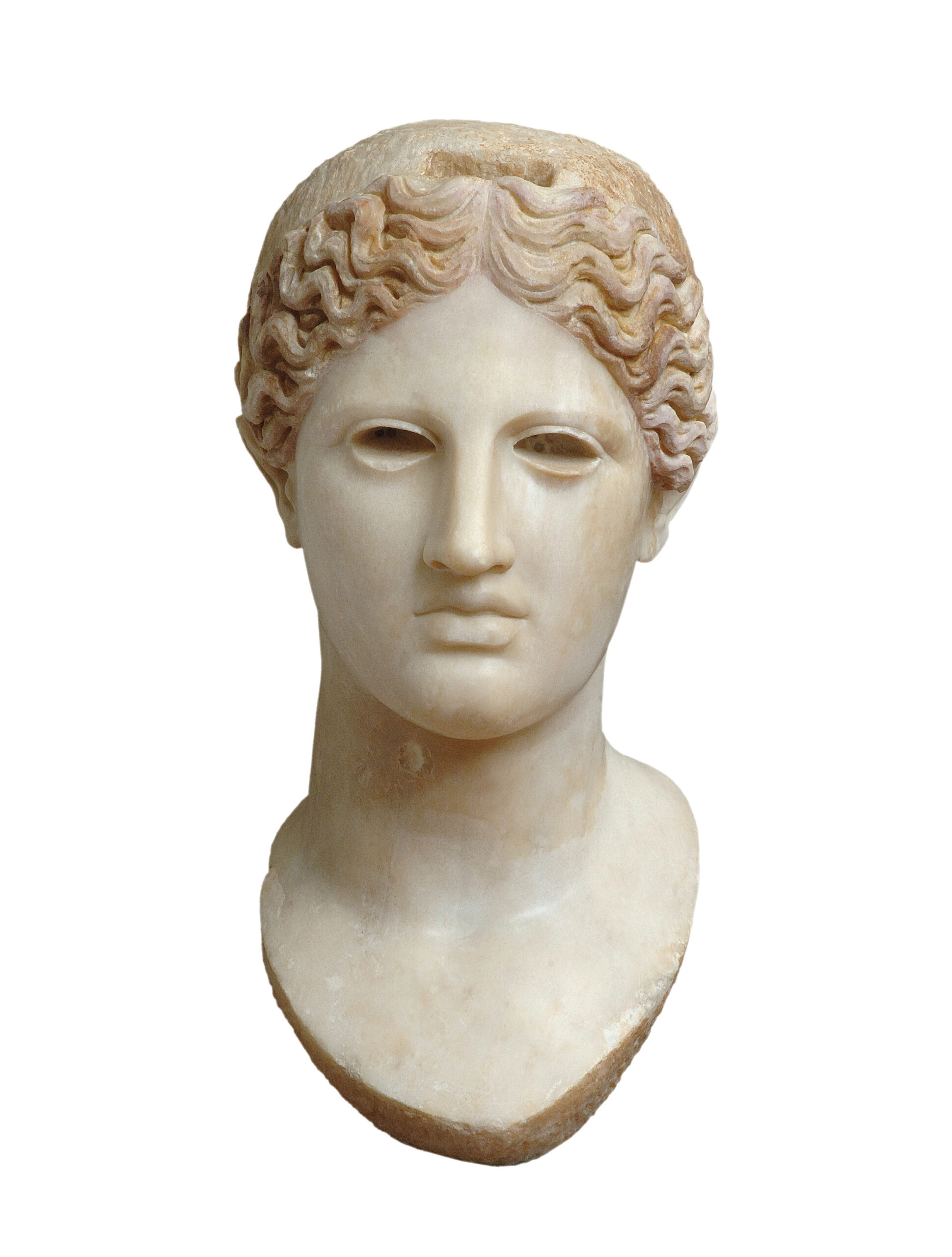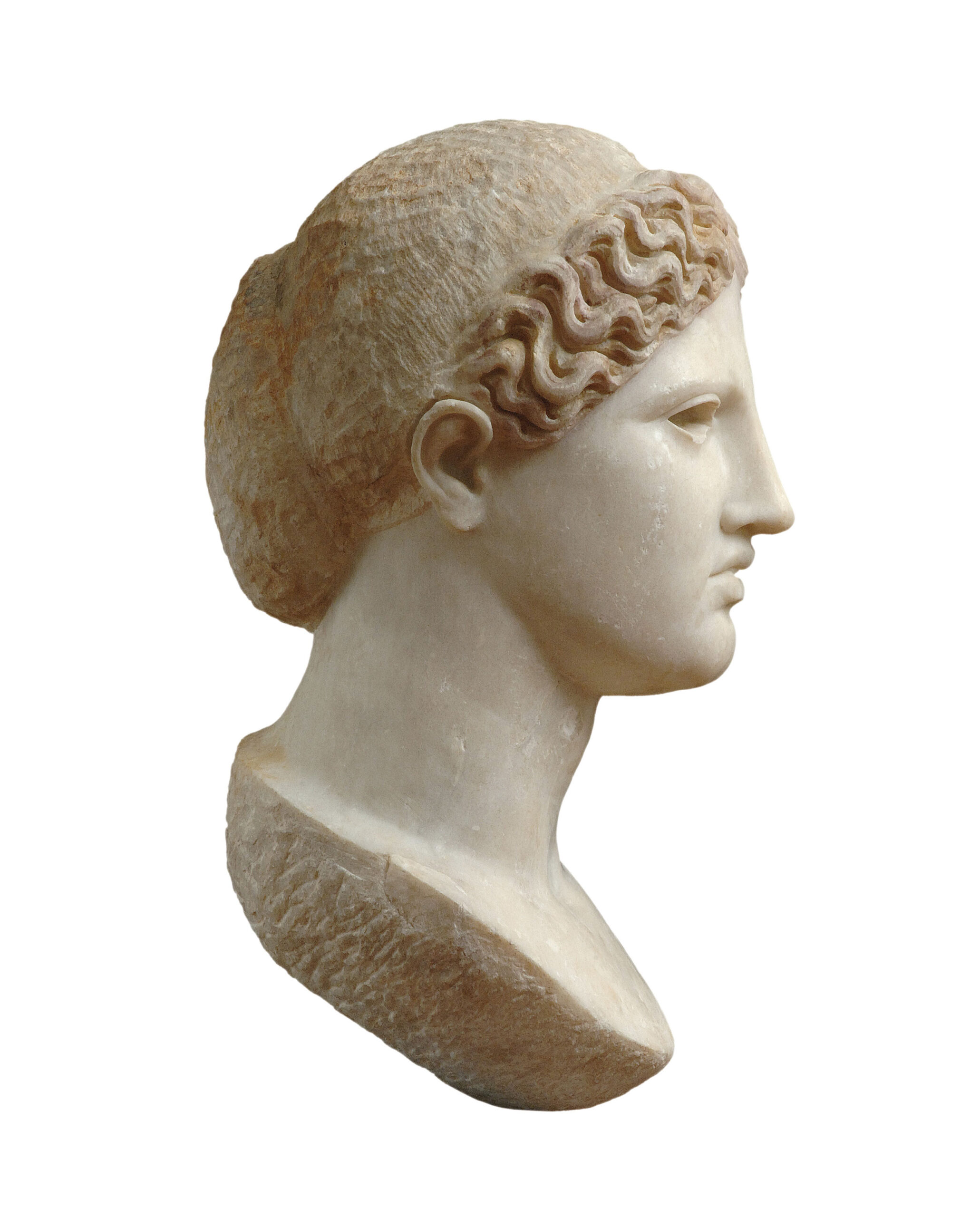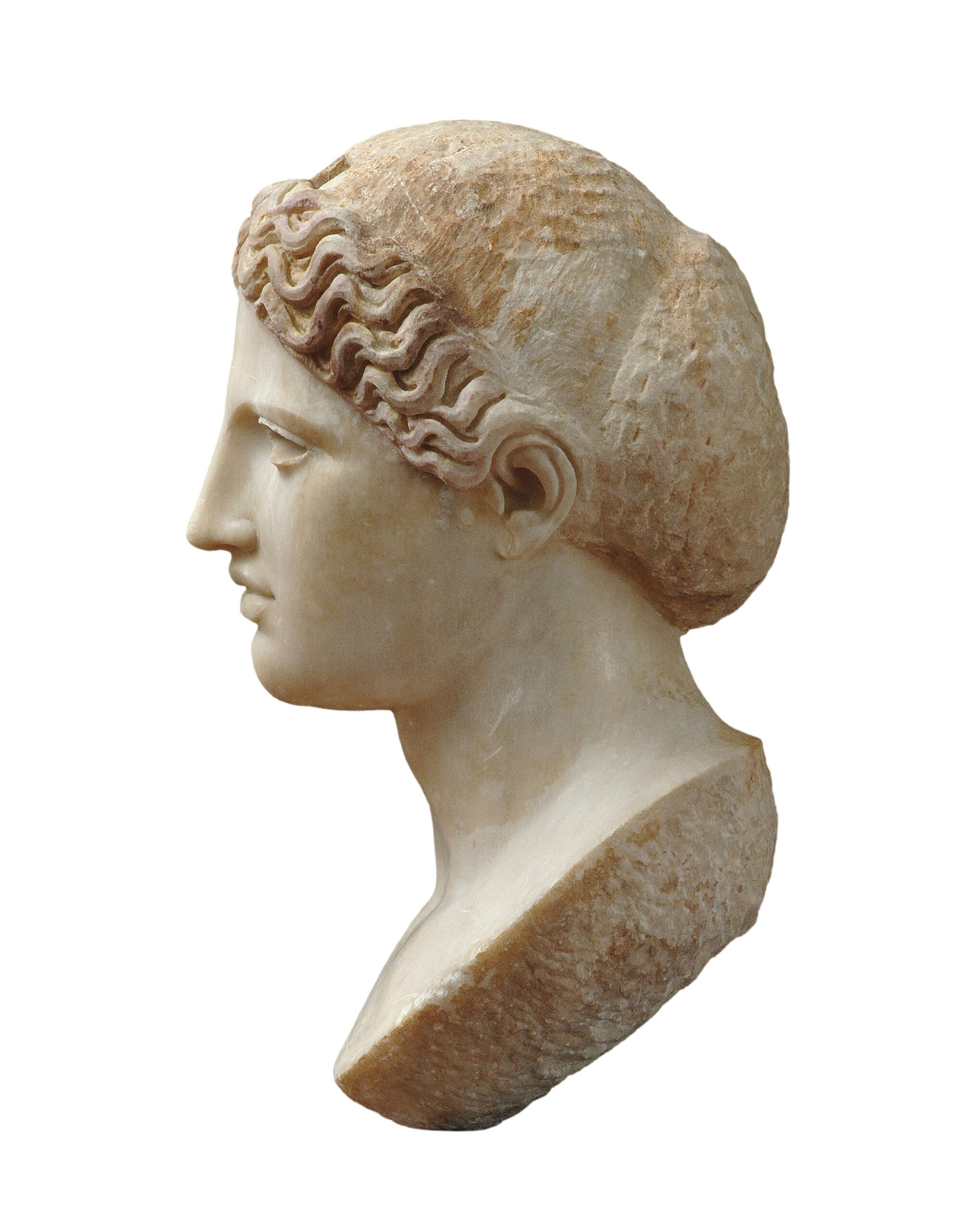





Υπερφυσικού μεγέθους κεφαλή με το άνω μέρος του στέρνου διαμορφωμένο σε έμβολο για την ένθεσή του σε κορμό αγάλματος. Η επιφάνεια του προσώπου και του λαιμού είναι πολύ καλά δουλεμένη και στιλβωμένη. Τα μάτια ήταν ένθετα από άλλο υλικό. Η κομμωση έχει δουλευτεί μόνο στην όψη με πυκνούς βοστρύχους. Το πίσω μέρος της κεφαλής, αν και σχηματίζει κότσο, έχει παραμείνει ακατέργαστο. Πιθανότατα το μέρος αυτό της κεφαλής καλυπτόταν από μαρμάρινο πέπλο στερεωμένο στον βαθύ ορθογώνιο τόρμο (2,5 Χ 6 εκ., βάθος 5,5 εκ.), που έχει σμιλευτεί ακριβώς πίσως από την χωρίστρα.
Η κεφαλή θυμίζει τον τύπο της Ηρας Borghese, o οποίος αντιγράφει πρωτότυπο μαρμάρινο έργο του 5ου αι. π.Χ. της σχολής του Φειδία (ίσως του Αγοράκριτου) ή χάλκινο άγαλμα της Αφροδίτης του Πολύκλειτου.
Τα τεχνοτροπικά και τεχνικά χαρακτηριστικά του γλυπτού το τοποθετούν στους ρωμαϊκούς χρόνους και συγκεκριμένα στην περίοδο του Αδριανού (2ος αι. μ.Χ.). Το μέγεθος της κεφαλής και η όλη μορφή υποδηλώνουν ότι πρόκειται για λατρευτικό άγαλμα θεάς (Ήρας ή Αφροδίτης) ή κάποιας θεοποιημένης Ρωμαίας αυτοκράτειρας με κλασικά χαρακτηριστικά που θυμίζουν θεότητα.
ΔΗΜΟΣΙΕΥΣΗ
– Χωρέμη-Σπετσιέρη Α. 2006. Λήμμα καταλόγου αρ. 108, στο Χωρέμη-Σπετσιέρη Α. – Ζαρκάδας Α. (επιμ.) 2006. Μουσείο Παύλου και Αλεξάνδρας Κανελλοπούλου. Αρχαία Τέχνη, Αθήνα, 178-181.